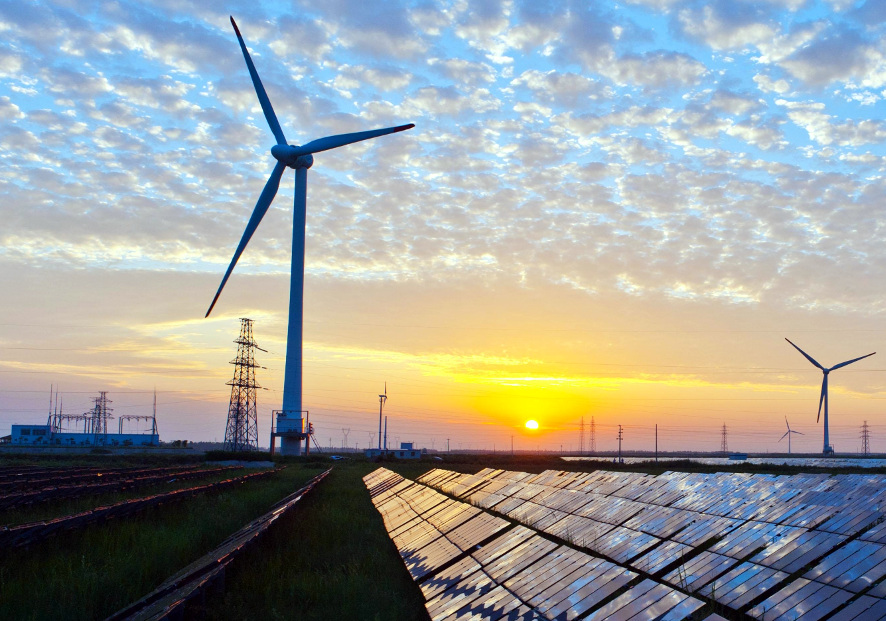The ACT now has final infrastructure in place to achieve its 100% renewable electricity target with the Hornsdale 3 wind farm in South Australia dispatching clean electricity under an offtake deal struck through the ACT’s reverse auction scheme. The 109 MW wind farm will generate enough renewable electricity to power the equivalent of around 58,000 homes in the ACT every year over the next 20 years.
With the help of wind in NSW, South Australia and Victoria, and solar located in and around the Canberra region, the ACT has delivered on its 100%-by-2020 renewable electricity target and reduced its greenhouse gas emissions by around 40% on the 1990 level. “This is a huge achievement in consolidating the ACT’s reputation as Australia’s renewable energy capital and is a significant milestone in achieving our ultimate goal of zero net emissions by 2045,” ACT Minister for Climate Change and Sustainability Shane Rattenbury said.
To achieve its 100% renewable goal, the ACT government has implemented a number of progressive policies and mechanisms, including its reverse auction scheme which has paved the way to 640 MW of wind and solar across 10 large-scale projects and already leveraged more than $2 billion of investment around Australia, and more than $500 million in the ACT.
The Hornsdale 3 wind farm is the last of its 10 large-scale renewable energy generators that are spread across the country and are helping to make the ACT the first major jurisdiction with a population of more than 100,000 outside Europe, and just the eighth globally to complete the transition away from a fossil-fuel based energy supply.
Louis de Sambucy, the managing director of Neoen Australia which owns and operates the Hornsdale Wind Farm, said Neoen was proud to be a part of history. “Neoen is incredibly proud to have supported the ACT in meeting its 100 per cent renewable energy target, by supplying electricity produced by our great Hornsdale wind farm in South Australia,” he said. “Our aim is to continue to support Australia’s energy transition by providing firm and affordable power 24-hours a day to Australians, creating a cleaner future for all.”
The ACT is now shifting its attention to even more ambitious goals. Last month, the Territory announced a further reverse auction for up to 250 MW of new renewable energy generation and 20MW/40MWh of battery storage to maintain 100% renewable electricity into the future as its economy and population expand. Only days later, it unveiled the next phase of its strategy towards zero net emissions by 2045 and pledged to phase out gas and pursue electrification of transport.
“With our recently announced new renewable electricity auction, we are now in a position where we are ready to maintain 100% renewable electricity from 2020 into the future,” Rattenbury said. “Reaching this feat has proven that climate change action is both achievable and affordable.”
It all started in 2016 when the ACT Government legislated a target of sourcing 100% renewable electricity by 2020—from within the ACT or across the National Electricity Market (NEM). The major initiatives the Territory has taken meanwhile include: a PV feed-in tariff scheme that operated between 2009 and 2011, a 40 MW large-scale solar auction held in 2012 and 2013, two 200 MW wind auctions held in 2014 and 2015, a 1 MW community solar scheme that opened for proposals in 2015 and the 200 MW Next Generation Renewables auction awarded in 2016.
In 2016, the Territory government announced two successful wind proponents as the winners of the Next Generation Renewables auction, the 91 MW Crookwell 2 Wind Farm developed by Union Fenosa Wind Australia in New South Wales and the 109 MW Hornsdale Wind Farm Stage 3 developed by Neoen and Megawatt Capital in South Australia.
At the time, the Next Generation Renewables auction set a benchmark price for renewable energy in Australia with $73/MWh for the Hornsdale Wind Farm, fixed for 20-years. The price for the Crookwell Wind Farm of $86.60/MWh was as a record low for a wind farm in NSW.
This content is protected by copyright and may not be reused. If you want to cooperate with us and would like to reuse some of our content, please contact: editors@pv-magazine.com.









1 comment
By submitting this form you agree to pv magazine using your data for the purposes of publishing your comment.
Your personal data will only be disclosed or otherwise transmitted to third parties for the purposes of spam filtering or if this is necessary for technical maintenance of the website. Any other transfer to third parties will not take place unless this is justified on the basis of applicable data protection regulations or if pv magazine is legally obliged to do so.
You may revoke this consent at any time with effect for the future, in which case your personal data will be deleted immediately. Otherwise, your data will be deleted if pv magazine has processed your request or the purpose of data storage is fulfilled.
Further information on data privacy can be found in our Data Protection Policy.